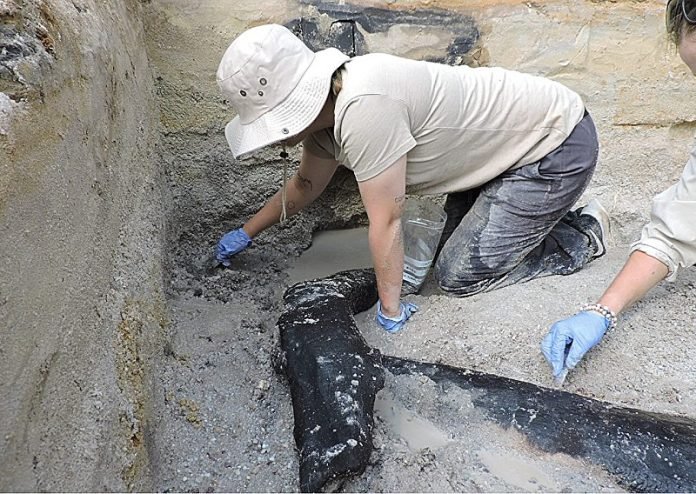
Have you ever wondered how far back in time humans started building things like houses or platforms?
A team of researchers from the University of Liverpool and Aberystwyth University has made an eye-opening discovery that might just have the answer.
They found evidence of wooden structures built by humans nearly half a million years ago!
That’s older than our own species, Homo sapiens. This exciting news comes from an archaeological site called Kalambo Falls in Zambia, and it’s shaking up what we thought we knew about early human life.
What Did They Find?
The researchers dug up really old wood, which has been dated back to at least 476,000 years ago. Usually, wood rots away over time, but the high water levels at this site helped preserve it.
Marks on the wood show that early humans shaped the logs to make something—probably a foundation for a platform or even a dwelling.
This is the oldest evidence we have of humans crafting wood into a specific shape to make something bigger.
Before this discovery, we thought humans only used wood for simple things like making fire, sticks for digging, and spears.
Why Is This A Big Deal?
This new find changes how we think about our ancestors. It shows they weren’t just wandering around; they were building things and possibly setting up homes.
Professor Larry Barham, who led the research, said, “Forget the label ‘Stone Age.’
These people were intelligent, imaginative, and skillful. They created something new that never existed before.”
What makes this even more surprising is that the people who built these structures had a stable life. They lived near a river, had plenty of food from the surrounding forest, and they even made life easier by building these structures, possibly to sit on while doing their daily tasks.
How Do We Know It’s That Old?
To figure out how old these wooden pieces are, the team used a special dating technique called luminescence dating.
This tells us when the sand around the wooden pieces last saw sunlight. It’s a way to look back in time and understand how old something is. And it turns out, this site is even older than anyone thought, making it super important for understanding human history.
What’s Next?
Kalambo Falls is already considered a special site, and it’s on a list to possibly become a United Nations World Heritage Site.
This new discovery makes that argument even stronger. The area is right next to a waterfall on the border between Zambia and Tanzania. And this research is part of a bigger project looking into how human technology has evolved over time.
Professor Barham and his team are excited about what they might find next. “The Deep Roots team is looking forward to more exciting discoveries,” he said.
This site is a treasure chest of history, and who knows what other secrets are waiting to be discovered?
So, the next time you build something out of wood, just remember: you’re continuing a tradition that’s almost half a million years old!
Follow us on Twitter for more articles about this topic.



